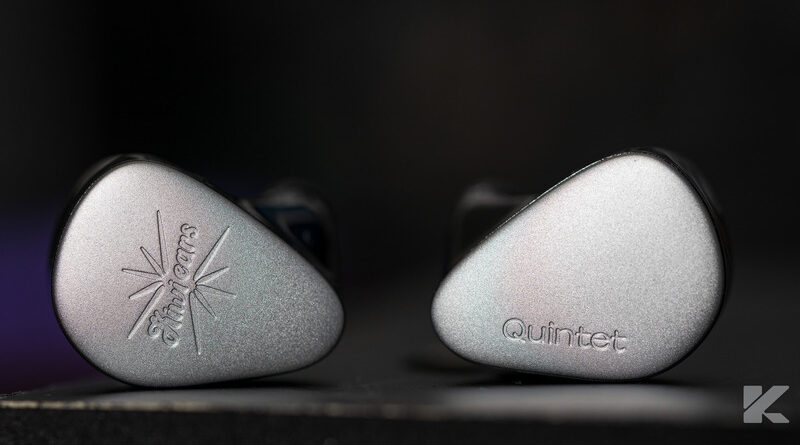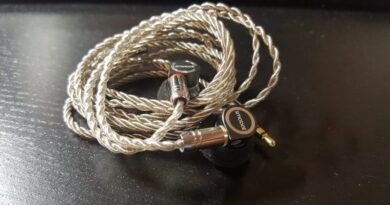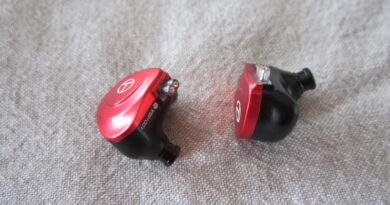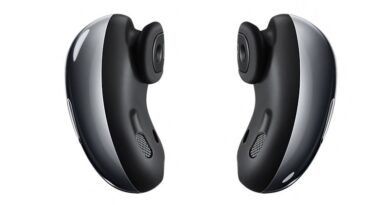Kiwi Ears Quintet Review – Lowering The Barrier
Pros — Build and accessory pack
– Good stock cable
– Novel driver setup
– Bass density and rumble
– Safely tuned and tonally-correct mids
– Very good staging, imaging, and layering
– Class-leading upper-treble extension
Cons — The Quintet can exhibit some incoherence during the transition from mids to treble
– Mid-bass texture could be better
– Lower-mids get veiled by the sub-bass
– Slight “zing” in the upper-treble
In this Article
INTRODUCTION
A few months back, I reviewed the Kiwi Ears Orchestra Lite. They seemed to have a safe, no-frills tuning that veered towards “too smooth” at times.
Nonetheless, what stood out about them was the driver configuration given the price point. Similar themes re-appear with the Kiwi Ears Quintet that sport a quad-hybrid (also known as Quadbrid) setup for midrange pricing. In recent years, such driver setup has been exclusive to the TOTL or kilobuck IEMs, so the Quintet have already won the spec-sheet war.
Sound quality is not proportional to the driver count though, so the Quintet have a lot to live up to if they want to carve a spot in this hyper-competitive market.
Note: Thanks to Linsoul for sending the Kiwi Ears Quintet for evaluation.
Sources used: Questyle CMA Twelve Master, Cayin RU7
Price, while reviewed: $220. Can be bought from Linsoul.
PHYSICAL THINGS AND USABILITY
PACKAGING AND ACCESSORIES
The packaging is minimal, while the accessories are fairly good. The stock tips were good enough for me, and the stock cable seems fine so I assume a replacement will not be essential. The sheathing is a bit on the stiffer side but it also adds some durability, so a fair trade-off.
BUILD QUALITY
Kiwi Ears opts for a pseudo-custom shell design, with 3D-printed resin on the inner shell while a metal faceplate adorns the outer part. There are two vents beside the (flush) 2-pin port. The nozzle is on the thicker side, so third-party eartips might need some compatibility check.
Overall, a no-frills design that’s practical without being a highlight.
COMFORT, ISOLATION, AND FIT
Despite the thicker-than-average nozzle, the Quintet are comfortable for me even during long listening sessions. I did not notice any driver flex. Isolation is average, likely due to the dual vents.
SOURCE AND EARTIPS
For this review, I used the stock narrow-bore eartips and the stock cable. Cayin RU7 was used as the source while on-the-go, and the Questyle CMA Twelve Master was the source when using on the desk.
KIWI EARS QUINTET DRIVER SETUP
Driver configuration is perhaps the most interesting aspect of the Quintet. They have a grand total of five drivers (apt model naming) of four different types: 1 DD (DLC-coated diaphragm), 2 BAs (dual-BA configuration), 1 micro-planar, and 1 piezo-electric bone-conduction (BC) driver.
The BC driver is placed atop the dynamic driver, whereas the other four drivers are placed in various parts of the shell. There is also a damper in front of the Knowles driver to keep resonances in check.
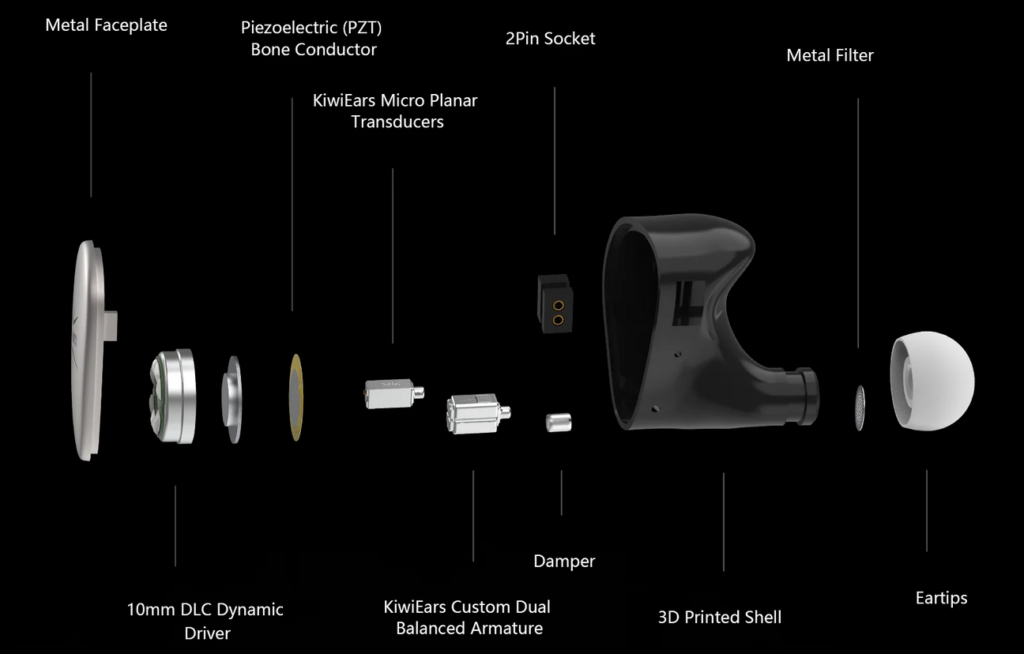
All in all, a very interesting driver configuration and perhaps the Quintet are only “quadbrid” IEMs under the USD$300 mark.
TONALITY AND TECHNICALITIES
The tuning of the Kiwi Ears Quintet is close to that of the Harman 2019 target, but with a subjectively better bass shelf and more extended treble.
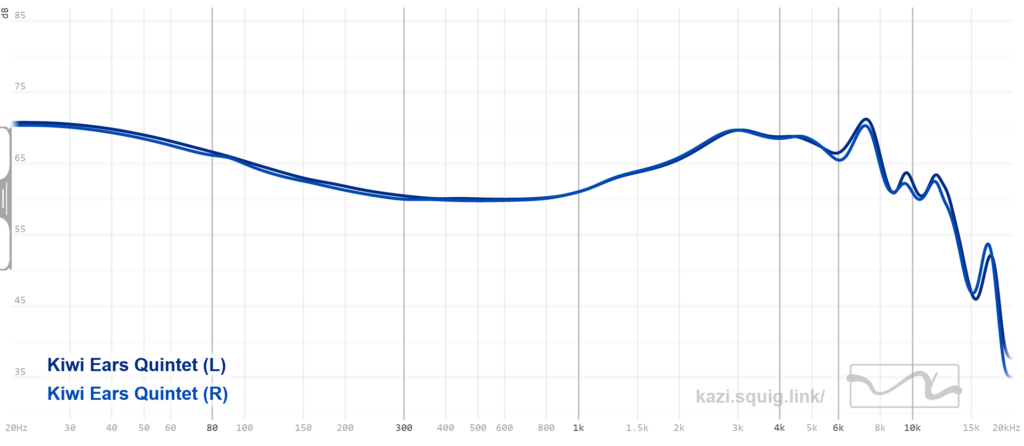
Kiwi Ears’ take on the Harman target has its perks: the mid-bass is not as “hollow”, resulting in superior and more realistic rendition of percussive hits. Moreover, the added brilliance in the upper-treble makes the perceived stage wider, due to the added airiness, alongside increasing resolved details.
All is not fine, however, as the sub-bass is still too overzealous at times and can cast a shade over the lower-midrange, making male vocals sound hazy and lacking articulation in bassy tracks.
Moreover, the upper-mids are pulled back lower than the sub-bass shelf, resulting in certain female vocals being pushed back in the mix. This might be a boon for those who prefer their vocals pulled back and are allergic to shout. On the other hand, those looking for every minute detail in vocals and string instruments will be left wanting.
I found the treble tuning right up my alley. There is a distinct change in timbre when moving from the mid-treble to upper-treble, as the piezo driver adds a distinct “sheen” to the trailing end of notes in hi-hats and cymbal hits. However, I found the coloration mostly inoffensive and the added sense of air and resolution far outweighed the con of incoherence for me.
Finally, staging is better than average, while imaging was mostly accurate despite having some issues in locating instruments that are placed in ordinal directions. Microdynamics could be better to further highlight subtle shifts in volume, while macrodynamic punch is well rendered.
SELECT COMPARISONS
The Sennheiser IE 200 are single dynamic driver IEMs, and so loses immediately in terms of driver count. Also, the stock accessories are plain better on the Quintet.
However, the IE 200 gain back points due to their more natural timbre and excellent coherency. I also found the bass and mids to be better tuned on the IE 200, with bass notes having superior texture.
In the end, the choice is between a more natural and balanced midrange and bass tuning (IE 200) vs a more resolving pair of IEMs with better treble extension (Quintet). The listener’s preferences will determine the ultimate winner.
CONCLUDING REMARKS
For me, the Quintet are the most well-rounded product Kiwi Ears has launched so far. While the Orchestra Lite had their merit, and the budget IEMs are competitively priced and mostly well-tuned, they all lack the “X-factor” that makes a product stand out.
The Quintet have that X-factor in the form of class-leading upper-treble extension. They also significantly lower the barrier of entry for a pair of quadbrid IEMs.
These days, most releases fall by the wayside, failing to capture even the slightest attention and ending up as flavor-of-the-month at best. The KiwiEars Quintet are genuinely interesting for a change, and I can wholeheartedly recommend them to anyone pining for good treble and an otherwise inoffensive tuning.
DISCLAIMER
Get it from Linsoul
Our generic standard disclaimer.



